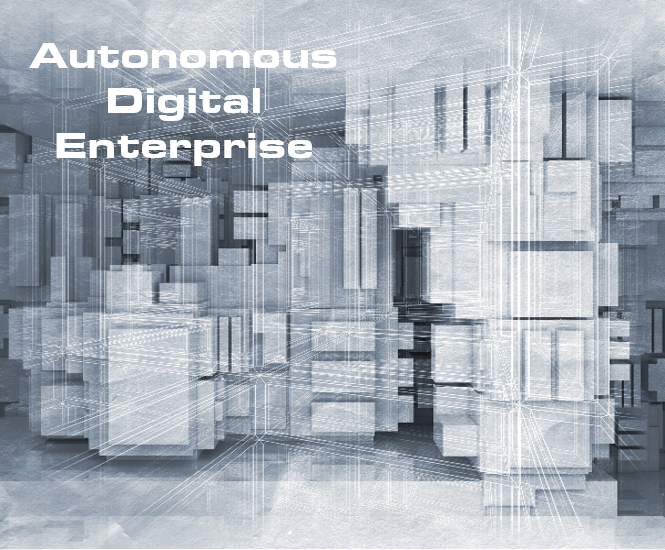Closures forced by the coronavirus pandemic coupled with the difficulty some businesses are having finding workers to fill job vacancies have motivated many companies to look more closely at automation. This perfect storm of events has also increased the buzz about Autonomous Digital Enterprises (ADEs). Ayman Sayed (@asayed), CEO of BMC Software, notes, “Business agility has proven to be a cornerstone of success in any industry. The past year has made the ability to pivot and innovate — despite supply chain, workforce, and economic disruptions — an absolute business necessity. And as a result, we’re seeing increased innovation in how companies operate, all built on technology investments with incredible stories of reinvention that attest to the importance of the pivot for future success.”[1] He believes the ability to pivot is enhanced when a company becomes an Autonomous Digital Enterprise; which he describes as “an organization that embraces intelligent, tech-enabled systems across every facet of the business.”
Digital Transformation on Steroids?
Business journalist Apoorva Bellapu insists, “[An] Autonomous Digital Enterprise is a growth-oriented enterprise that aims at delivering value in solutions and enabling greater agility as well as flexibility of operations. In addition to focusing on the customer experience, [an] ADE pays equal attention to the feedback provided to be able to incorporate actionable insights on the basis of that feedback.”[2] From that description, it’s clear the Autonomous Digital Enterprise is built on a foundation of data and cognitive technologies. Most business consultants insist companies founded on Industrial Age principles and continuing to use Industrial Age processes must transform into digital enterprises or risk going out of business. As Bellapu notes, “Automation and digital transformation are ruling the world.” However, the addition of the word “autonomous” to the term “digital enterprise” conjures up a sterile and humanless work environment. Is that what the ADE movement aims achieve?
For one, Bellapu sees the ADE as a technology-rich working environment rather than one devoid of human workers. She envisions “a drastic switch in the work culture — from the in-person work culture to the remote culture, [including] the adoption of virtual conferences using the cloud infrastructure [and] data sharing capabilities.” Frankly, that seems more like a reflection of current conditions than it does of a vision of a new normal following the end of the pandemic. Another business journalist, Meenu EG, agrees the ADE will be a technology-rich working environment, but one in which “automation provides increased visibility and security” and one that empowers a “business by delivering better outcomes and insights with less human intervention.”[3] Transforming into a digital enterprise where decisions can be made with “less human intervention” is certainly achievable. In fact, many analysts believe it is essential for success in the Digital Age.
The staff at Corsair’s Publishing observes, “Data science has all the buzz. If you read the headlines, businesses everywhere are hiring PhDs to build sophisticated machine learning algorithms. Massive repositories of big data are everywhere.”[4] They also bluntly state, “Decision science is probably more important to your organization than data science.” That’s a bold statement, but one with which Bain analysts, Michael C. Mankins and Lori Sherer (@lorisherer) agree. They assert, “The best way to understand any company’s operations is to view them as a series of decisions.”[5] They add, “We know from extensive research that decisions matter — a lot. Companies that make better decisions, make them faster and execute them more effectively than rivals nearly always turn in better financial performance. Not surprisingly, companies that employ advanced analytics to improve decision making and execution have the results to show for it.”
If the Autonomous Digital Enterprise is primarily about making better and faster decisions, then Autonomous Decision Science™ (ADS™) is going to play a major role in such organizations. What is Autonomous Decision Science? ADS combines mathematical computation with semantic reasoning and symbolic logic. The Enterra ADS® system analyzes data, automatically generates insights, makes decisions with the subtlety of an expert’s judgment, and executes those decisions at machine speed with machine reliability. Of course, not all decisions can or should be made autonomously. Even when humans are involved, however, cognitive technologies, like the Enterra Cognitive Core™ — a system that can Sense, Think, Act, and Learn® — can augment decision-making in beneficial ways. As an email I received from Consumer Goods Technology stated, “Insights are only valuable when they are being used to support decision-making and drive decisive action. That’s why the number of brands investing in AI and Big Data solutions, all of which promise to enable insight-driven decision making at scale, has increased significantly in recent years.”
Although decision-making plays a significant role in any Autonomous Digital Enterprise, Ram Chakravarti (@RamChakravarti2), Chief Technology Officer at BMC Software, reminds us that the movement towards an ADE is more than just about decision-making. He explains, “Companies that successfully rode out the turmoil — or thrived in the face of it — transformed their processes at an extraordinary rate. And now they’re looking at what other steps they can take to continue moving forward. Digital transformation, and evolving toward becoming an Autonomous Digital Enterprise — a future-state framework where companies embrace intelligent, tech-enabled systems across every facet of the business through emerging technologies like automation — is the theme of the day.”[6]
Concluding Thoughts
Although Autonomous Digital Enterprise sounds like a buzz phrase, the digital transformation imperative is real. Sayed notes, “A September [2020] Fortune article estimated that nearly 100,000 businesses that shut down in 2020 are permanently out of business. And technology would not have necessarily saved them all. But the ability to pivot an organization’s focus and execution, with technology supporting speed and efficiency in the process, has demonstrated a clear value in helping businesses stay open.” In the end, the ADE movement is all about business agility and resilience. Sayed concludes, “Disruption has become the norm more than anything else, and as leaders, we must build our business to be agile, customer-centric, and data-driven to support pivots as needed.” If I had the power to change the acronym ADE, I would change it from Autonomous Digital Enterprise to Agile Digital Enterprise. In the concluding installment of this article, I will discuss some of the trends and technologies pushing the ADE movement forward.
Footnotes
[1] Ayman Sayed, “COVID has revealed the essential value of the digital ‘pivot’,” Fortune, 27 April 2021.
[2] Apoorva Bellapu, “What Is the Autonomous Digital Enterprise Buzz All About?” Analytics Insight, 21 August 2021.
[3] Meenu EG, “Evolving Into an Autonomous Digital Enterprise,” Analytics Insight, 14 January 2021.
[4] Corsair’s Publishing, “Why Decision Science Is Probably More Important To Your Organization Than Data Science,” Comprehension 360, 17 December 2018.
[5] Michael C. Mankins and Lori Sherer, “Creating value through advanced analytics,” Bain Brief, 11 February 2015.
[6] Ram Chakravarti, “Accelerating Toward An Autonomous Digital Enterprise in 2021,” CIO, 9 February 2021.





